Golf Balls
Discover our extensive range of discount golf balls for sale from leading brands like Srixon, Bridgestone, Titleist, TaylorMade, Wilson, <Callaway and more.
Whether you're on the hunt for a low-compression ball to complement your fast swing speed or a high-spin ball for precise control around the greens, we have options tailored to every skill level and playing style.
Stock up for your next round or buy in bulk to maximise the savings! Shop our range of new and second-hand golf balls online or head into a Golf Clearance Outlet store near you for personalised advice from a golfing expert.
-
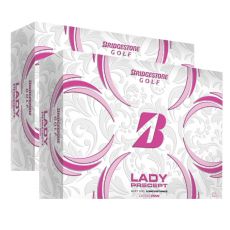
$20.00 OFF RRP
Bridgestone 2021 Lady Precept Golf Ball - Pink (2 Dozen)Bridgestone 2021 Lady Precept Golf Ball - Pink (2 Dozen)Special Price NZD 75.00 Regular Price NZD 95.00 $20.00 OFF RRP -
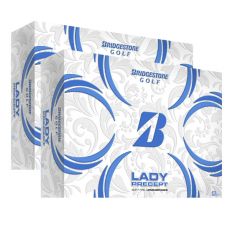
$20.00 OFF RRP
Bridgestone 2021 Lady Precept Golf Ball - White (2 Dozen)Bridgestone 2021 Lady Precept Golf Ball - White (2 Dozen)Special Price NZD 75.00 Regular Price NZD 95.00 $20.00 OFF RRP -

$5.99 OFF RRP
Bridgestone 2023 E12 Contact Golf Ball - Matte Red (1 Dozen)Bridgestone 2023 E12 Contact Golf Ball - Matte Red (1 Dozen)Special Price NZD 54.00 Regular Price NZD 59.99 $5.99 OFF RRP -
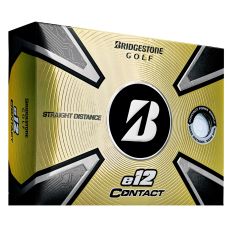
$5.99 OFF RRP
Bridgestone 2023 E12 Contact Golf Ball - White (1 Dozen)Bridgestone 2023 E12 Contact Golf Ball - White (1 Dozen)Special Price NZD 54.00 Regular Price NZD 59.99 $5.99 OFF RRP -
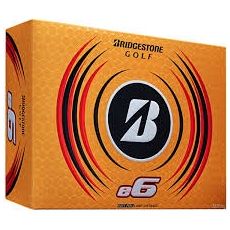
$4.99 OFF RRP
Bridgestone 2023 E6 Golf Ball - White (1 Dozen)Bridgestone 2023 E6 Golf Ball - White (1 Dozen)Special Price NZD 42.00 Regular Price NZD 46.99 $4.99 OFF RRP -
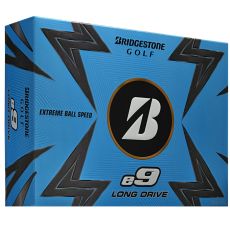
$10.99 OFF RRP
Bridgestone 2023 E9 Long Drive Golf Ball - White (1 Dozen)Bridgestone 2023 E9 Long Drive Golf Ball - White (1 Dozen)Special Price NZD 43.00 Regular Price NZD 53.99 $10.99 OFF RRP -

$15.00 OFF RRP
Bridgestone 2023 Extra Soft Golf Ball - White (1 Dozen)Bridgestone 2023 Extra Soft Golf Ball - White (1 Dozen)Special Price NZD 24.99 Regular Price NZD 39.99 $15.00 OFF RRP -
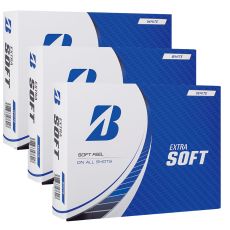
$45.97 OFF RRP
Bridgestone 2023 Extra Soft Golf Ball - White (3 Dozen)Bridgestone 2023 Extra Soft Golf Ball - White (3 Dozen)Special Price NZD 74.00 Regular Price NZD 119.97 $45.97 OFF RRP -
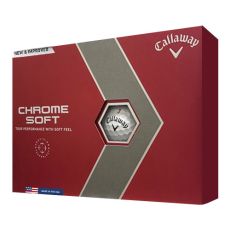
$12.00 OFF RRP
Callaway 22 Chrome Soft Golf Balls (1 Dozen)Callaway 22 Chrome Soft Golf Balls (1 Dozen)Special Price NZD 67.00 Regular Price NZD 79.00 $12.00 OFF RRP -
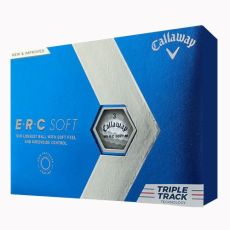
$17.99 OFF RRP
Callaway 23 ERC Soft Triple Track Golf Ball - White (1 Dozen)Callaway 23 ERC Soft Triple Track Golf Ball - White (1 Dozen)Special Price NZD 52.00 Regular Price NZD 69.99 $17.99 OFF RRP -
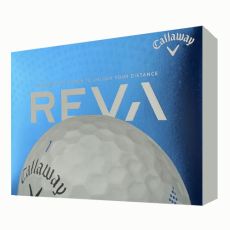
$12.95 OFF RRP
Callaway 23 Reva Golf Ball - Pearl (1 Dozen)Callaway 23 Reva Golf Ball - Pearl (1 Dozen)Special Price NZD 32.00 Regular Price NZD 44.95 $12.95 OFF RRP -
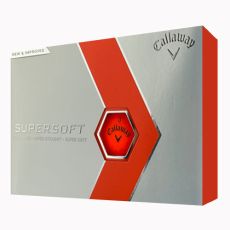
$15.95 OFF RRP
Callaway 23 Supersoft Golf Ball - Orange (1 Dozen)Callaway 23 Supersoft Golf Ball - Orange (1 Dozen)Special Price NZD 29.00 Regular Price NZD 44.95 $15.95 OFF RRP -
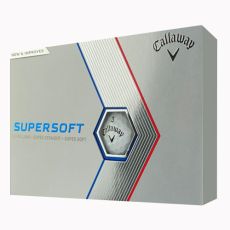
$15.95 OFF RRP
Callaway 23 Supersoft Golf Ball - White (1 Dozen)Callaway 23 Supersoft Golf Ball - White (1 Dozen)Special Price NZD 29.00 Regular Price NZD 44.95 $15.95 OFF RRP -
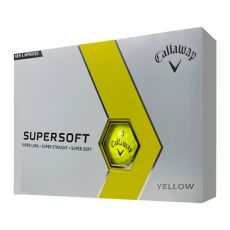
$15.95 OFF RRP
Callaway 23 Supersoft Golf Ball - Yellow (1 Dozen)Callaway 23 Supersoft Golf Ball - Yellow (1 Dozen)Special Price NZD 29.00 Regular Price NZD 44.95 $15.95 OFF RRP -
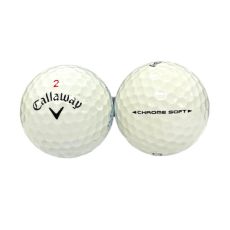
$10.00 OFF RRP
Callaway Chrome Soft - Grade 1 (1 Dozen)Callaway Chrome Soft - Grade 1 (1 Dozen)Special Price NZD 49.00 Regular Price NZD 59.00 $10.00 OFF RRP -
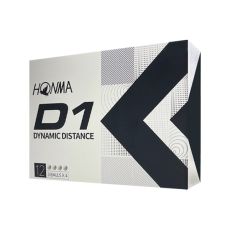
$10.00 OFF RRP
Honma D1 Golf Ball White (1 Dozen)Honma D1 Golf Ball White (1 Dozen)Special Price NZD 29.00 Regular Price NZD 39.00 $10.00 OFF RRP -

$40.00 OFF RRP
Honma D1 Golf Ball White (3 Dozen)Honma D1 Golf Ball White (3 Dozen)Special Price NZD 77.00 Regular Price NZD 117.00 $40.00 OFF RRP -
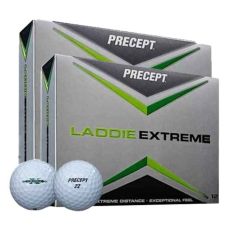
Enquire
Precept Laddie Extreme Golf Balls (2 Dozen)
NowPrecept Laddie Extreme Golf Balls (2 Dozen)Special Price NZD 45.00 Regular Price NZD 65.00 $20.00 OFF RRP -

$4.95 OFF RRP
Srixon AD333 11 Golf Ball - WhiteSrixon AD333 11 Golf Ball - WhiteSpecial Price NZD 42.00 Regular Price NZD 46.95 $4.95 OFF RRP -

$4.95 OFF RRP
Srixon AD333 11 Golf Ball - YellowSrixon AD333 11 Golf Ball - YellowSpecial Price NZD 42.00 Regular Price NZD 46.95 $4.95 OFF RRP -
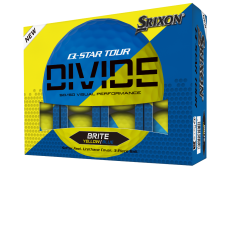
$10.95 OFF RRP
Srixon Q Star Tour5 Divide Golf Ball - Blue (1 Dozen)Srixon Q Star Tour5 Divide Golf Ball - Blue (1 Dozen)Special Price NZD 42.00 Regular Price NZD 52.95 $10.95 OFF RRP -
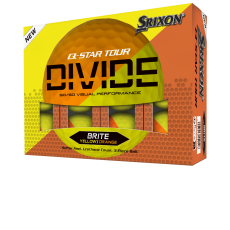
$10.95 OFF RRP
Srixon Q Star Tour5 Divide Golf Ball - Orange (1 Dozen)Srixon Q Star Tour5 Divide Golf Ball - Orange (1 Dozen)Special Price NZD 42.00 Regular Price NZD 52.95 $10.95 OFF RRP -
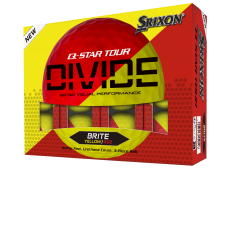
$10.95 OFF RRP
Srixon Q Star Tour5 Divide Golf Ball - Red (1 Dozen)Srixon Q Star Tour5 Divide Golf Ball - Red (1 Dozen)Special Price NZD 42.00 Regular Price NZD 52.95 $10.95 OFF RRP -
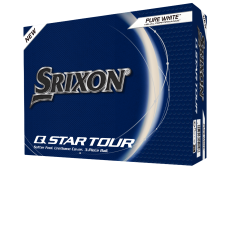
$10.95 OFF RRP
Srixon Q Star Tour5 Golf Ball - White (1 Dozen)Srixon Q Star Tour5 Golf Ball - White (1 Dozen)Special Price NZD 42.00 Regular Price NZD 52.95 $10.95 OFF RRP -
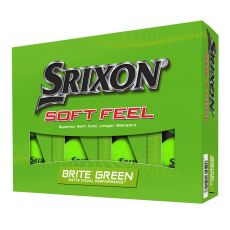
$5.95 OFF RRP
Srixon Soft Feel 13 Brite GREEN 3 BallSrixon Soft Feel 13 Brite GREEN 3 BallSpecial Price NZD 32.00 Regular Price NZD 37.95 $5.95 OFF RRP -
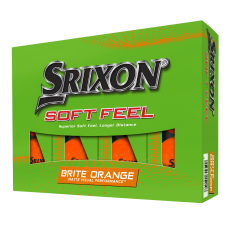
$5.95 OFF RRP
Srixon Soft Feel 13 Brite ORANGE 3 BallSrixon Soft Feel 13 Brite ORANGE 3 BallSpecial Price NZD 32.00 Regular Price NZD 37.95 $5.95 OFF RRP -
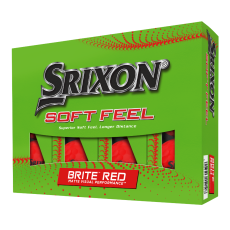
$5.95 OFF RRP
Srixon Soft Feel 13 Brite RED 3 BallSrixon Soft Feel 13 Brite RED 3 BallSpecial Price NZD 32.00 Regular Price NZD 37.95 $5.95 OFF RRP -
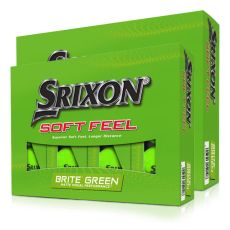
$19.90 OFF RRP
Srixon Soft Feel 13 Golf Ball - Green (2 Dozen)Srixon Soft Feel 13 Golf Ball - Green (2 Dozen)Special Price NZD 60.00 Regular Price NZD 79.90 $19.90 OFF RRP -
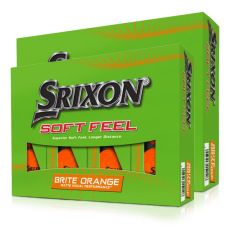
$13.90 OFF RRP
Srixon Soft Feel 13 Golf Ball - Orange (2 Dozen)Srixon Soft Feel 13 Golf Ball - Orange (2 Dozen)Special Price NZD 60.00 Regular Price NZD 73.90 $13.90 OFF RRP -
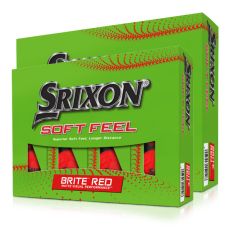
$13.90 OFF RRP
Srixon Soft Feel 13 Golf Ball - Red (2 Dozen)Srixon Soft Feel 13 Golf Ball - Red (2 Dozen)Special Price NZD 60.00 Regular Price NZD 73.90 $13.90 OFF RRP
What To Consider When Buying Golf Balls
Whether you're a seasoned golfer aiming for the perfect shot or a novice wondering, "What golf ball should I use?", the right golf ball is essential to enhance your performance on the course.
From construction and compression to understanding how spin and feel impact your game, navigating the world of golf balls can be daunting. If you're unsure where to start, here’s a run-down on all the essentials you need to know to find the perfect golf ball to elevate your game to the next level.
Types of Golf Balls
There are a variety of types of golf balls to choose from, each tailored to suit different playing styles and skill levels. The most common include:
Two-Piece Golf Balls: The most common type of golf ball, two-piece golf balls consist of a solid rubber core surrounded by a cover made of durable material such as Surlyn or urethane.
Three-Piece Golf Balls: These balls have a core, an intermediate layer and a cover. The core is usually larger and softer than that of two-piece balls, providing more spin and control.
Multi-Layer Golf Balls: These golf balls have more than three layers, with each layer serving a specific purpose such as distance, spin control or feel.
Low-Compression Golf Balls: These balls have a softer core, which compresses more upon impact with the clubface.
High-Compression Golf Balls: Conversely, high-compression balls have a firmer core, which minimises compression upon impact.
Distance Golf Balls: These balls are engineered to maximise distance off the tee. They typically feature a large, solid core and a low-spin cover, allowing for longer carries and roll-out.
Spin Golf Balls: Spin balls are designed to generate higher spin rates, providing greater control over ball flight and shot shaping.
Tour/Performance Golf Balls: These balls typically feature multi-layer constructions, urethane covers and advanced dimple designs to optimise spin, trajectory and feel.
Skill Level and Playing Style
Matching your ball choice to your skill level and playing style can enhance your overall performance on the course.
Generally, beginners and high-handicap players benefit from two-piece or low-compression balls which offer plenty of forgiveness and distance, whereas intermediate to advanced players may prefer three-piece or multi-layer balls which offer greater control and spin.
If distance off the tee is paramount, consider balls engineered for maximum yardage, such as distance balls with low-spin covers. However, if shot shaping and control is more important to you, you may prefer spin balls with softer covers.
Players with faster swing speeds may also find high-compression balls suitable for better control, while those with slower swings may be best placed opting for low-compression balls for improved feel and distance.
Construction and Layers
Golf balls are constructed of three main components or layers—the core, the mantle and the cover. Different golf balls utilise slightly different layer variations which determine the overall performance of the golf ball, including distance, spin, control and feel.
Core: The core impacts distance and feel. A larger, softer core compresses more on impact, providing greater distance, especially for slower swing speeds. Firmer cores offer more control and workability, often preferred by faster swingers.
Mantle: The mantle layer affects spin and control. A thicker mantle can reduce spin, promoting straighter shots off the tee, while a thinner mantle may increase spin for better control on approach shots and around the greens.
Cover: The cover influences feel, spin and durability. Soft covers (like urethane) provide better feel and spin control, ideal for finesse shots. Harder covers (such as Surlyn), offer durability and distance, making them suitable for high-handicap players.
Compression
Golf ball compression refers to the degree to which the ball's core is compressed upon impact with the clubface.
Compression is typically measured in a range from 30 to 110, with lower compression indicating softer cores that compress more easily (suitable for slower swing speeds), and higher compression indicating firmer cores that compress less (preferred by faster swingers). The following compression chart can help you determine the compression level best suited to your swing speed:
|
Average swing speed (mph) |
Recommended compression |
|
<80 |
Low compression (30-65) |
|
80-100 |
Medium compression (65-90) |
|
>100 |
High compression (90+) |
If you’re unsure of your average swing speed, an average golfer typically has a swing speed of around 90-100 mph for males and 60–80 mph for females.
Feel: Hard vs Soft Golf Balls
Feel refers to the tactile sensation you experience when striking a golf ball with a club, including the perceived softness or hardness of the impact, the feedback received through the hands and senses and the sound generated upon contact.
The hardness or softness of a ball is the most significant factor to consider here.
Hard balls will come hot off the clubface (meaning they’ll produce less compression and a higher speed), which is great for generating distance. While this can seem great if you have an average swing speed, there is a catch—hard balls offer far less benefit in terms of spin, shot shaping and control. While a hard ball may make it easier to travel down the fairway, you’ll likely find chips, wedge shots and putting more challenging.
While soft balls won’t generate the distance of a hard ball, they will offer more in terms of spin and shot control, making it easier to manoeuvre your shots in different directions.
Spin
Spin is crucial in golf because it directly influences the trajectory, distance and control of the ball's flight. Spin is influenced by variations in the ball's construction, cover material and dimple design.
Low-spin golf balls typically feature harder covers and fewer dimples, which reduce friction with the air and result in a lower spin rate. Low spin balls are ideal when you want maximum distance and straighter ball flights.
Conversely, high-spin balls are engineered to generate greater spin rates, especially on approach shots and around the greens. They usually have softer covers, which grip the clubface more effectively, and feature designs with more dimples or shallower dimple patterns to increase turbulence and lift. High-spin balls provide enhanced control over trajectory and shot shaping, but may sacrifice some distance off the tee.
Environment and Weather Conditions
Weather and course conditions can also significantly impact your choice of golf ball.
Wet or soft course conditions may require a ball with higher spin to minimise side help hold the green on approach shots. Conversely, on a firm and fast course, it’s best to opt for a lower spin ball to maximise roll-out and distance.
When playing in windy conditions, you may want to opt for a ball that reduces spin to minimise the effects of crosswinds, aiding accuracy off the tee. On calm days, a higher spin ball will offer better control around the greens.
Cold weather can also cause golf balls to lose some of their elasticity, resulting in reduced distance. In cold conditions, you might prefer a ball with a softer core for better compression and distance. It’s also important to know how to clean your golf balls between holes and after each round, particularly when playing in wet or muddy conditions.
Price
Golf balls can vary significantly in price—you can expect to pay anywhere from around $20 up to $80 for a dozen balls depending on what you want.
Our best tip here is that the most expensive golf balls aren’t necessarily the best golf balls. You can find good golf balls at any price point, and you may find cheap golf balls perform just as well as the more expensive ones, provided you choose the right type of ball for your game.
Aside from searching for the latest golf ball sales, another great tip to help you save some cash is to consider purchasing used golf balls. While you may prefer new balls when the stakes are high, second-hand, low price golf balls can be great when used as practice golf balls!
Find The Perfect Golf Balls at Golf Clearance Outlet
Golf Clearance Outlet is your go-to whenever you’re after discounted golf gear.
Stocking an extensive range of brand new, second-hand and ladies golf balls from big-name brands at budget prices, we’ve got you covered no matter what you’re looking for.
If you’re having trouble choosing golf balls, remember you can always visit a Golf Clearance Outlet store where one of our golf experts can walk you through the various options.
Browse our golf ball range online or find your closest Golf Clearance Outlet store

